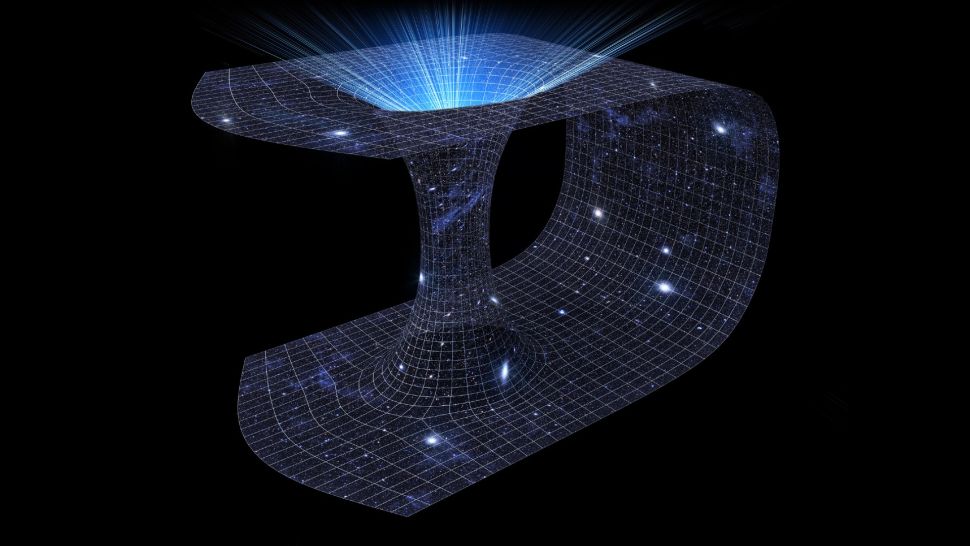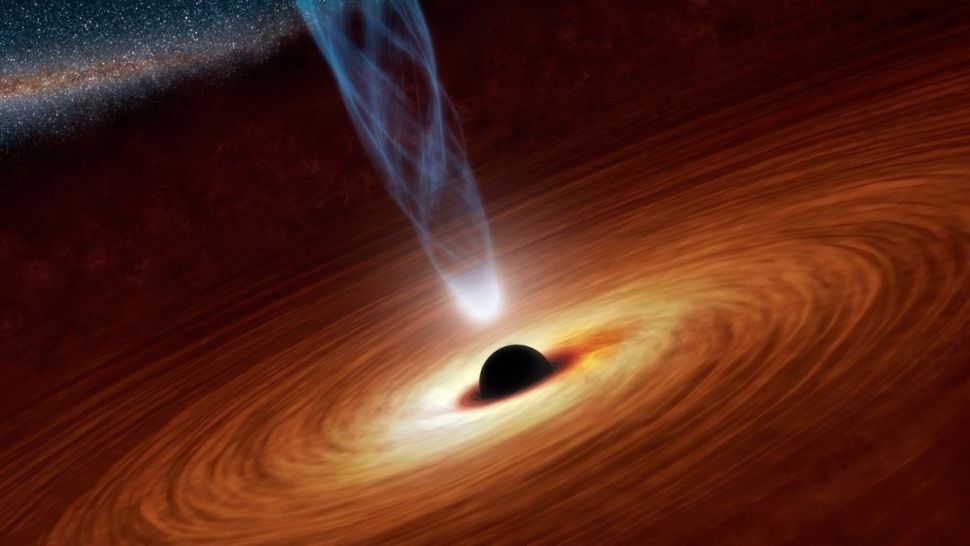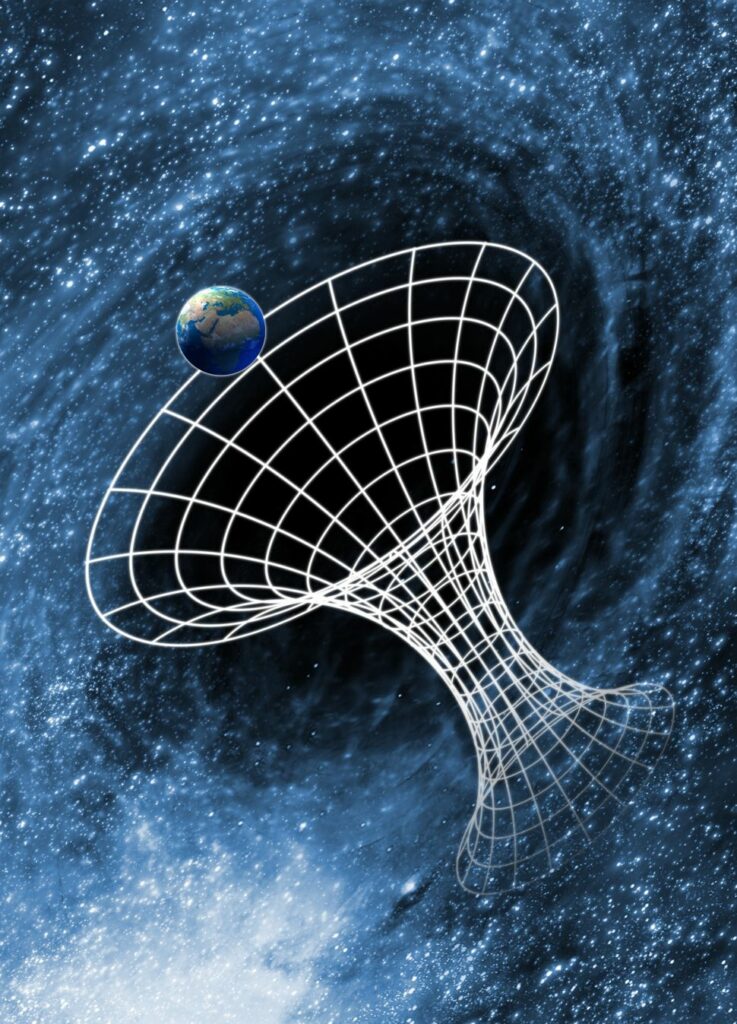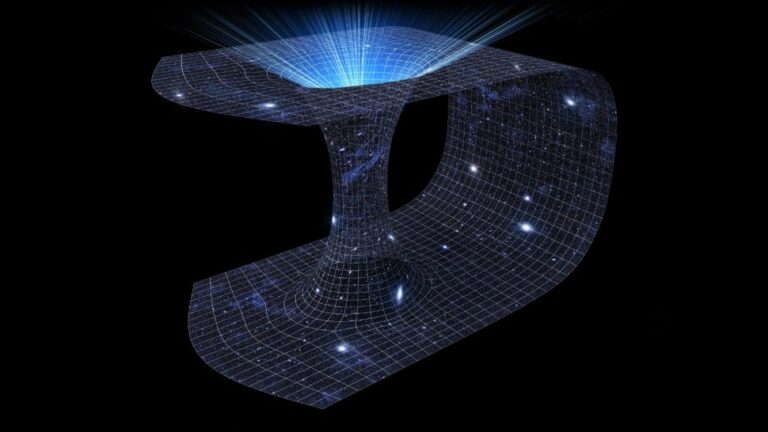A groundbreaking simulation of a wormhole may bring general relativity and quantum physics together.
The breakthrough could suggest a way to study ‘quantum gravity,’ the missing link between quantum physics and Einstein’s general relativity in the lab.
In order to examine the dynamics of wormholes, speculative spacetime objects that first appeared in Albert Einstein’s 1915 general theory of relativity, scientists have developed a quantum experiment.
The researchers developed a wormhole model to operate on a quantum processor instead of making a real wormhole, a gap in space and time that is hypothesized to connect two distant regions of space. This gave them the chance to research the physics of wormholes and possible links to so-called “quantum gravity.”

The principal investigator of the Quantum Communication Channels for Fundamental Physics (QCCFP) research program at the U.S. Department of Energy said, “We found a quantum system that exhibits key properties of a gravitational wormhole while being sufficiently small to implement on today’s quantum hardware.” “This effort is a first step in a bigger program of employing a quantum computer to examine quantum gravity theory.”
It took “a pretty long time to get at the results,” according to co-author Samantha Davis, a graduate student at Caltech. The team was taken aback by the finding, which shows that wormhole-like activity may be explained from the perspectives of both quantum physics and general relativity.
While this novel model does not completely replace direct probes of quantum gravity, Spiropulu—also the Shang-Yi Ch’en Professor of Physics at the California Institute of Technology—added that it does provide a potent means of exploring theories of quantum gravity in the lab.
The most precise depiction of the subatomic world is provided by quantum physics, but the finest explanation of the cosmos on genuinely vast sizes is provided by Einstein’s general relativity. The issue is that despite how resilient these two branches of physics have become since their birth at the turn of the 20th century, they remain separate.
This is due to the fact that gravity cannot be described at the level of quantum physics, despite the fact that gravity is the main topic of general relativity. Because of this, finding a “quantum theory of gravity” is of utmost importance to physicists and might hold the key to the long-sought “theory of everything” in physics.
The wormhole the researchers built using quantum mechanics could help them in their search.
Since 1935, when Albert Einstein and American-Israeli physicist Nathan Rosen interpreted his general relativity equations to characterize wormholes as tunnels through the very fabric of spacetime, scientists have been thinking about wormholes.
The spacetime passageways that were first known as “Einstein-Rosen Bridges” were subsequently referred to as “wormholes” by black hole expert John Wheeler in the 1950s.

In 2013, a link was made between wormholes and entanglement, a concept in quantum physics that indicates two particles may be connected in such a manner that, no matter how far apart they are from one another, even if they are on opposite ends of the universe, altering one instantly changes the other.
When Juan Maldacena and Leonard Susskind proposed that wormholes were analogous to entanglement in that both described a connection between remote regions of the cosmos, they united the two separate fields of general relativity and quantum mechanics. Spiropulu said, “It was a very audacious and lyrical notion.”
Physicist Daniel Jafferis, co-lead author of this study and a professor of physics at Harvard University, and his colleagues developed the concept proposed by Maldacena and Susskind in 2017.
They created a theory in which a wormhole is kept open by a negative repulsive energy for long enough for anything to pass from one end to the other, so generating a traversable wormhole.
The idea of a traversable wormhole was comparable to another aspect of quantum physics called quantum teleportation, which makes use of entanglement principles to send information across extremely long distances via optical fiber or through the atmosphere.
As the Caltech-led team conducts the first experiments that test the theory that information traveling from one point in space to another can be described using either the language of gravity established by general relativity or by quantum entanglement — the language of quantum physics — this current research takes the potential connection between wormholes and quantum teleportation and explores it in greater detail.

The group began by creating a baby Sachdev-Ye-Kitaev (SYK) quantum system and entangling it with another SYK system to create a model that preserves gravitational features.
The scientists then used machine learning to simplify this model on conventional computers so they could witness wormhole-like phenomena on Google’s Sycamore quantum processor.
We used learning methods to identify and build a straightforward SYK-like quantum system that could be stored in the available quantum architectures while maintaining the gravitational features, according to Spiropulu. In other words, we looked at the effective model that we discovered on the quantum processor after simplifying the microscopic description of the SYK quantum system.
The scientists implanted a qubit, the fundamental building block of quantum computing, into one of the SYKs as part of the experiment. A qubit is analogous to a regular bit in conventional computing. They then observed information being available at the other SYK.
In terms of quantum teleportation, this indicated that the information had moved from one quantum system and emerged from another. However, this simulated a trip via a reachable wormhole in terms of gravity.
Only when the researchers sought to prop open their model of a bridge in spacetime using pulses of repulsive negative energy did the essential properties of a traversable wormhole become apparent. This is consistent with how true wormholes, if ever discovered, are predicted to function in the depths of space.
The team’s test, which was the first of its type, could only have been accomplished with the incredible fidelity of Google’s quantum processor.
“The signal would have been completely masked if the error rates had been increased by 50%. If they were half, the signal would be ten times stronger!” stated Spiropulu. “The preservation of the other measures by the optimization of one model feature is intriguing and unexpected. To get deeper understanding of the model itself, we want to conduct more testing.”
Increasingly while the development of complete quantum computers may still be years away, these upcoming experiments will include shifting the job to even more intricate quantum circuits.
“One of the most significant topics in fundamental physics and an active field of theoretical inquiry is the link between quantum entanglement, spacetime, and quantum gravity,” Spiropulu said. We are enthusiastic to make this first attempt at testing these theories using quantum technology and will continue.
The team’s research will be published on Thursday (Dec. 1) in the journal Nature.
Do not forget to share your opinion with us to provide you with the best posts !




0 Comments